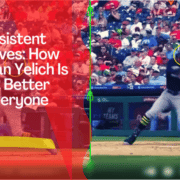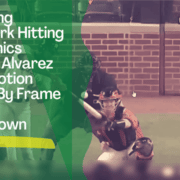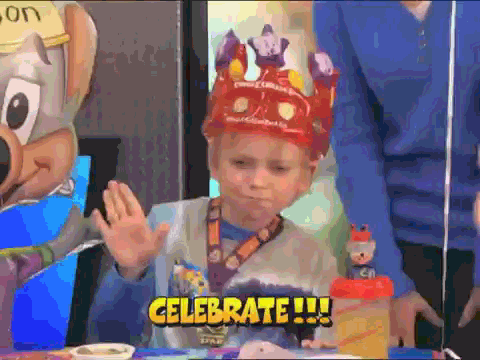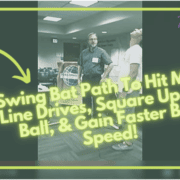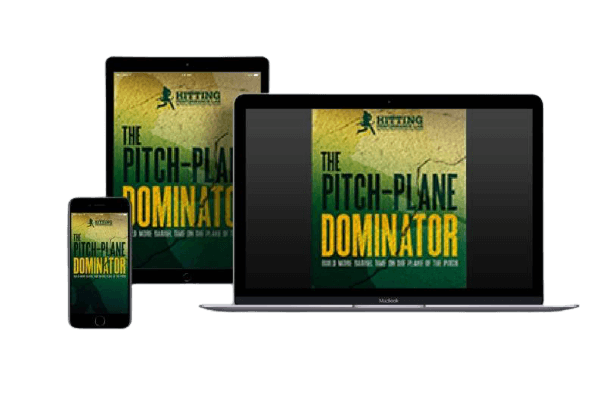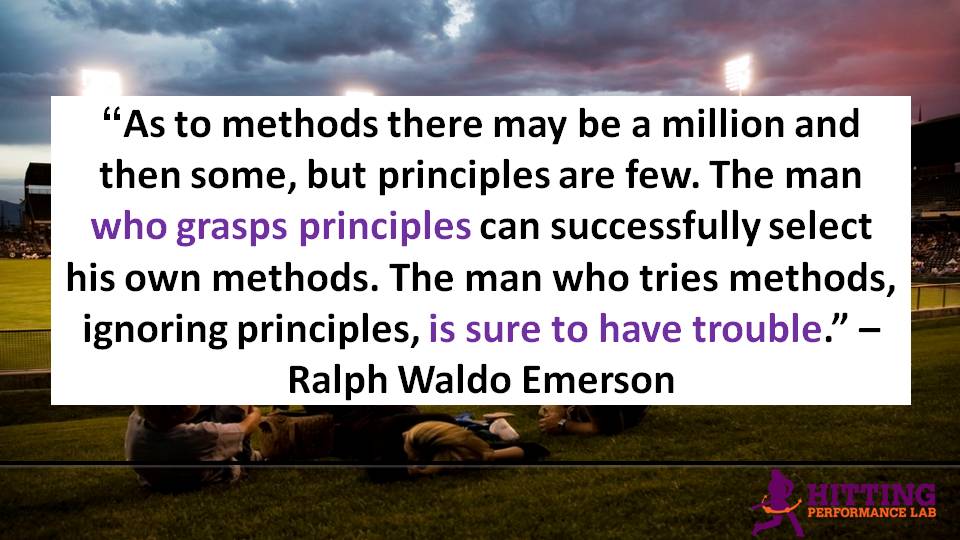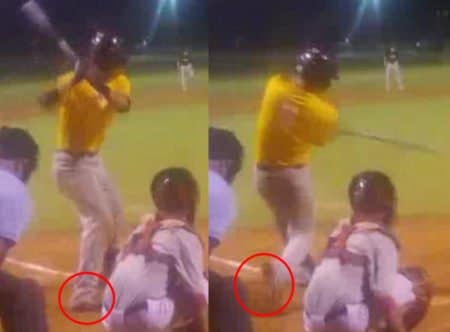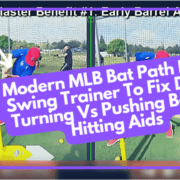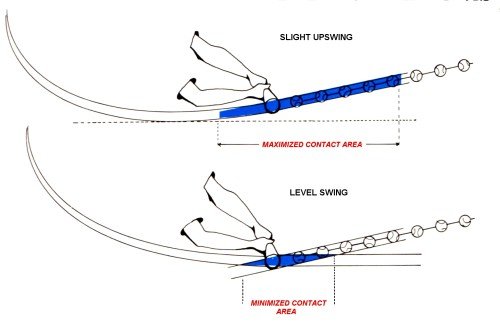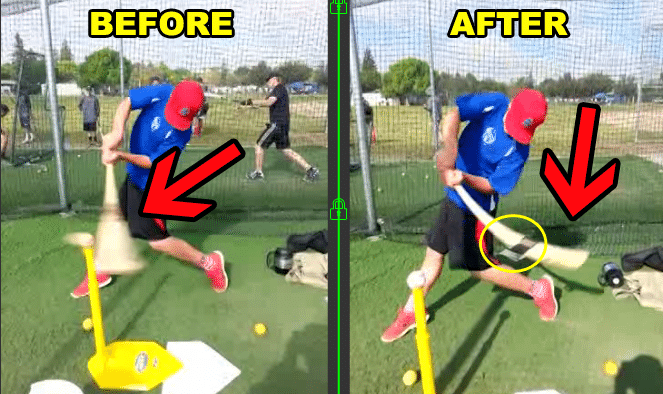Discover what our online hitting video analysis training program can do for your baseball or softball hitters. Learn about how we model the most feared MLB swings of the modern era.
Who Is Your Swing Model? And WHY?
In this post, we go over:
- 7 reasons WHY we need a better standard of measure,
- Who are you modeling? And WHY? And,
- 5 gold standard criteria keys for a high level swing…
This post started when I entered into a discussion with a gentleman on YouTube that asked me, “Who is your swing model?”
And I feel this is an outstanding question. Leading me to the success you experience is directly related to the quality of questions you ask. And, we must note that success leaves clues. So, if we ask better questions, then the answer to what swing to model will bubble to the top. And let me be clear, I don’t care if people disagree with me.
Quite the contrary. However, ‘willful ignorance’ among coaches debating which swing to model is a pandemic online, and most of the time, misguided – or unguided – thinking is the driver. The standard of measure hitting criteria I routinely read online is, “I only study elite hitters” (said in the most condescending tone you can imagine).
WTFudge does that mean!!!?
SCIENCE-BASED TRAINING:
Improve your hitting strategy dramatically by applying human movement principles.
Learn not only how and what to train but also the science behind the methods.
Define your criteria please. That statement is too subjective to be useful to ANYONE. I think this explains why so many confused online people online say, “You can’t teach hitters a cookie cutter system because every hitters is different.” This individual DOES NOT have a clue as to how human movement principles work…or that there are such things!!
Here’s a clue…ALL explosive human movements originate from a set of working principles that cannot be broken (as long as you’re on earth).
Whether you’re a hitter, pitcher, Hammer Thrower, Olympic Diver, or Acrobat.
Otherwise, we’re all just taking a stab in the dark at what we personally feel is a good swing. Picking out a good swing isn’t like what US Supreme Court Justice Potter Stewart said about pornography in 1964, “I know it when I see it.”
Again, success leaves clues. There’s a recipe for optimal swing movement, and if you choose to be willfully ignorant about that fact, then consider this…
…quote by Atlas Shrugged author Ayn Rand (and thanks Bob Hall for sharing):
“You can avoid reality, but you cannot avoid the consequences of avoiding reality.”
To further drive this point home…
I wanted to share a quote from a book I’m currently reading called, “Bad Science: Quacks, Hacks, and Big Pharma Flacks, by Ben Goldacre
“I meet individuals who are eager to share their views on science despite the fact that they have never done an experiment. They have never tested an idea for themselves, using their own hands, or seen the results of that test, using their own eyes, and they have never thought carefully about what those results mean for the idea they are testing, using their own brain. To these people “science” is a monolith, a mystery, and an authority, rather than a method.”
7 Reasons WHY We NEED a Better Standard of Measure with Hitting…
- Information Overload – where does one start their quest for hitting truth when everyone and their mother has a YouTube channel? In other words, how do we cut through the white noise?
- Playing Experience Fallacy – do we listen to the ex-professional hitter because he/she played at a higher level? Let me give you a clue...“Doing a thing and understanding a thing do not automatically qualify you to teach a thing.” – Dan Farnsworth
- OCD Analysis Fallacy – do we listen to the Obsessive Compulsive humanoid who studies ‘only the most elite hitters’ for 25 hours a day, everyday? Here’s another clue…it depends on who they’re studying because guess what, some elite hitters succeed despite ineffective mechanics, NOT because of them.
- The 30+ Year Coach Fallacy – do we listen to the coach who makes it known they have over 30 years of coaching experience? Here’s even another clue…most likely this coach has the same year of coaching experience, repeated 29+ years.
- Willful Ignorance – Old thought patterns die hard. Getting into it with these people is just mental gymnastics. Take it from me, take scissors and cut your loses. Nobody will ever change their mind. They’re bitter human beings who feel the need to gain significance from heated confrontation, and might I say, putting people and their ideas down – despite reality staring them in the face! (revisit Ayn Rand ‘avoiding reality’ quote above)
- Upsetting the Church of Baseball/Softball – Debating the swing DOES NOT have to resemble discussing politics and religion. I mentioned this already.
- The Sweet Spot – nowadays there’s so much quality information, easy expert access, and new technology that it makes cutting through the white noise so much easier. We just need a better standard of measure.
Grab This FREE 'Timing Master Class' Video
Struggling to get your hitters ON-TIME in games? Discover HOW TO build effective laser-focused timing, so your hitters can be ON-TIME more often. These principles are validated by REAL science.
Click the button below to access the FREE video that has been downloaded over 6K times!
Click here to 'Get Instant Access'
Who are YOU Modeling? And WHY?
Asking the ‘WHY’ is important, but a coach can still be misguided.
Here’s what I mean…
I had a Facebook reader tell me they modeled Miguel Cabrera’s closed landing foot because, as he somehow reasoned, is why Miggy gets outstanding plate coverage.
Wa??!
He also went on to name Barry Bonds, Tony Gwynn, and Pete Rose also landing closed and that’s why they had outstanding plate coverage.
Argument looks believable, right?
It’s a straw man argument though – let me tell you why…
This is a classic case of correlation not equalling causation.
Meaning, this reader believed a closed landing front foot EQUALS outstanding plate coverage…it’s misguided thinking. Looks good on paper, but doesn’t work on the battlefield.
I’d actually argue the opposite.
And don’t get me wrong, Miguel Cabrera is one of my favorite big slugger swing models, but as you’ve already heard me say, !!!BE CAREFUL!!! because bigger hitters tend to succeed despite ineffective mechanics, NOT because of them.
Landing closed WILL:
- Inhibit the turn of the pelvis (CLICK HERE for this Zepp swing experiment),
- Make hitters more susceptible to fastballs inside and high in the strike zone,
- NOT be what a majority of professional hitters even do (CLICK HERE where Chris Welch at ZenoLink explains his research in this), and
- NOT maximize a hitters springy fascia (CLICK HERE for this post).
Landing closed is definitely an inferior mechanic, and is not how my handful of 12 and under hitters, weighing around 100-lbs, are frequently hitting the ball the length of a football field, in games.
The fact Barry Bonds, Tony Gwynn, and Pete Rose landed closed is irrelevant to the plate coverage argument.
Again, it’s misguided thinking.
The bottom line is this,
…these hitters did A LOT of other things effectively that DID enable them better plate coverage.
But I can tell you, after looking at the research, testing this stuff out on myself, and on my hitters, landing with a closed front foot DOES NOT empower a hitter with better plate coverage.
What did Ayn Rand say about the consequences of avoiding reality? 😛 lol
So, what is the Gold Standard Criteria I use to define an elite level swing?
5 Gold Standard Criteria Keys for a High Level Swing
You don’t need to have 5/5, but at least 3/5:
- Smaller sluggers NO bigger than 6-foot tall, and weighing NO more than 215-pounds,
- Hits for both power AND average,
- Above average in key Metrics like: OPS, OPS+, HR/FB ratio, Line Drive%, Ball Exit Speed, Attack Angles, etc.,
- Minimal, if zero, injuries caused by the swing over career (in other words, the swing MUST be safe for the hitter – thank you Lee Comeaux for this one),
- Understanding that big sluggers may succeed with ineffective mechanics, NOT because of them.
Why smaller sluggers?
Because they MUST be highly effective to compete with the bigger sluggers because they have less to work with.
You Little League coaches can agree with me on this one…
Think about how much of a power advantage a 6-foot hitter has on the Little League diamond? Can I get an Amen on that?!
What’s more…
There are smaller sluggers that made my list that hit more home-runs, have higher average Ball Exit Speeds, and have higher average home-run distances than some of the high level big sluggers!!
So, what hitters do I suggest a coach model? Here is a non-exhaustive list:
- Dustin Pedroia,
- Sadaharu Oh,
- Ted Williams (he was 6’3″, but he only weighed around 180-lbs when he broke into the league, 3rd year he hit .406 with 37 homers and 33 2B’s),
- Hank Aaron,
- Josh Donaldson,
- Jose Bautista,
- Robinson Cano,
- Adrian Beltre,
- Mickey Mantle, and
- Andrew McCutchen.
These are not in any particular order, and not all are without blemish. Hitters of yesteryear tend to be cleaner with their swing movements, but I wanted to give examples you could look up on YouTube in slow-mo.
My favorite swing model of all these is Sadaharu Oh, who hit 868 dingers over a 22-year span standing in at a mere 5’10”, and weighing 173-pounds (CLICK HERE for a post I did on him).
And by the way, I’m not against the big sluggers, I love and often cite the following swings with my hitters:
However, any of this doesn’t do any bit of good if we don’t have a grasp of human movement principles first, before analyzing. This is methods without principles, and you’ll surely be misguided.

I use the analogy that human movement principles are like bumpers at the bowling alley. The path the ball takes down the lane, between the bumpers, MUST not concern us (the ‘path’ down the lane is what’s unique to a hitter). Just that the ball stays between them, and positive predictable results will come.
This is WHY we need a better standard of measure when choosing a swing model, not just saying “I know a good swing when I see one”.
Grab This FREE 'Timing Master Class' Video
Struggling to get your hitters ON-TIME in games? Discover HOW TO build effective laser-focused timing, so your hitters can be ON-TIME more often. These principles are validated by REAL science.
Click the button below to access the FREE video that has been downloaded over 6K times!
Click here to 'Get Instant Access'



